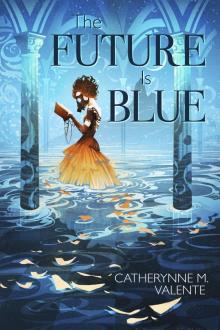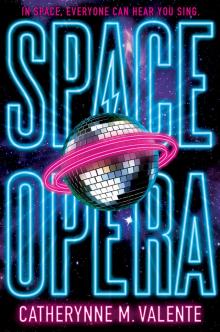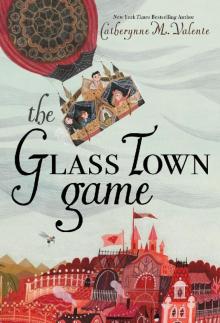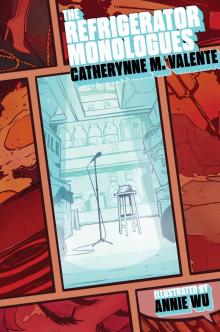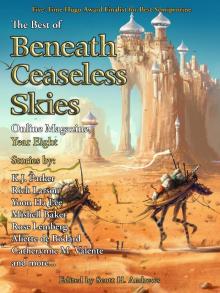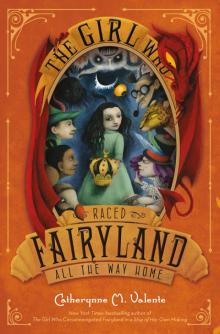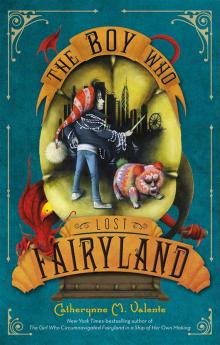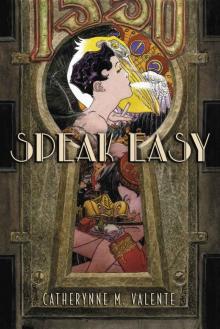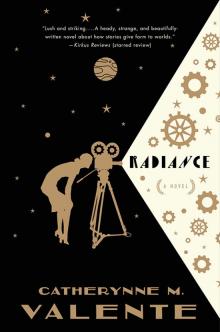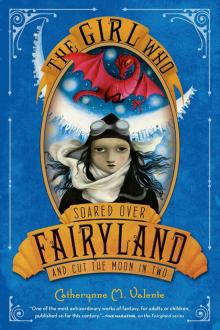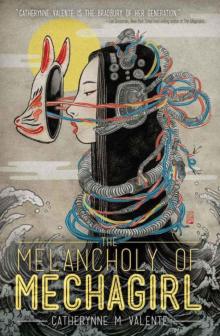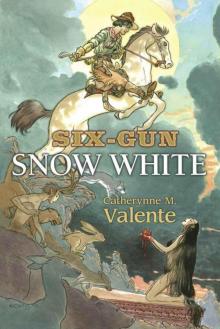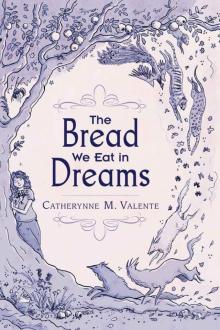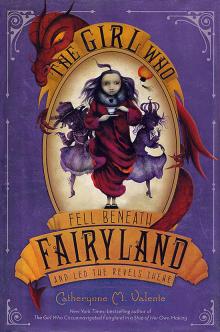


A Writer's Tale
Richard Laymon

THIS BOOK IS DEDICATED
TO
EVERYBODY WHO WANTS TO BE A WRITER PERSIST AND PREVAIL!
Richard Laymon
All good books are alike in that they are truer than if they had really happened and after you are finished reading one you will feel that all that happened to you and afterwards it all belongs to you; the good and the bad, the ecstasy, the remorse and sorrow, the people and the places and how the weather was. If you can get so that you can give that to people, then you are a writer.
Ernest Hemingway
Quoted in Hemingway: The Writer as Artist by Carlos
Baker, 1952.
WHO AM I TO BE WRITING A BOOK ABOUT MY LIFE AS A WRITER?
Let’s start by saying it wasn’t my idea. John Scoleri and Peter Enfantino, two of the fellows behind the publication of my first short story collection, A Good, Secret Place, approached me about it.
Early on, this was intended to be along the lines of a “Laymon companion”: including a complete bibliography, a biographical sketch, an interview, some articles about me, and various other bits and pieces that might be of interest to my die-hard fans.
I thought it sounded like a good idea, and agreed to cooperate.
Then one thing led to another…
As I worked on the book, it changed course.
It grew into something a little more than a “Laymon companion” for my fans.
I hope so, anyway.
This book tells the detailed, behind-the-scenes true story of a normal guy who always wanted to be a writer, worked hard at it, met with plenty of failure, but also managed to write thirty novels and sixty short stories by the time he was fifty years old. I’m still a failure in the United States if you don’t count my small corps of extremely loyal fans. In the United Kingdom, however, my books are sometimes main selections of book clubs.
They’re often bestsellers.
How did all this come about?
How did I get to be a published writer, a success and a failure simultaneously? What did I do right? What did I do wrong? Who helped me; who messed me up? And what have I learned along the way?
In this book, I tell you.
I decided it was time for someone to tell the true story of the ups and downs of an ordinary writer’s life.
It should be of some interest to people who know me, to my fans, to fellow writers, and to those who aspire to careers in writing.
I wrote it most especially for aspiring writers.
I tell them a few things they need to know about writing fiction and about the book industry.
Things that aren’t often told.
I see myself as a veteran of the book wars. I’m not a general; I’m a grunt. I’ve made it through a several tours of duty. Now, I’m ready to lead a platoon of aspiring writers through the jungle, telling them the hard facts, giving them pointers, showing how to avoid the booby traps and land mines, generally doing whatever I can to help them survive and win.
A book such as A Writer’s Tale would jeopardize the career of most authors. Which is why you’ve probably never seen another book like it. Since I have no career in the U.S. to jeopardize, I am in the peculiar position of feeling free to tell the whole truth.
I do have a career in the United Kingdom. Fortunately, however, I’m able to stick with the complete truth about my situation there still not jeopardizing my career, I hope because I have only the highest praise for my agent Bob Tanner, my editor Mike Bailey, and my publisher Headline House. I don’t “kiss up to them” in this book. I simply am completely delighted by them.
Now, I feel compelled to mention a couple of small matters about the language I use in this book.
First, I sometimes employ the term “story” in reference to full-length novels, not just to short stories. I don’t want anybody getting confused and thinking I mean “short story” every time I write the word “story.” If I’m commenting specifically about short stories, I say so. Otherwise, I might be talking about fiction of any length.
Second, darned if I could find a good way to handle the “he” stuff. Lord knows, I didn’t want to offend anyone’s feminist sensibilities.
The problem could be avoided, of course, by writing in the plural. “They” covers a wide range of genders. However, I didn’t wish to be stuck with a multitude of plural pronouns.
Sometimes, I sidestepped the issue by addressing “you.” But “you” is really informal, and I hated to overdo it.
I tried going for “he or she” a few times, but it seemed awfully cumbersome and dumb.
My respect for the language forbid me from using such mutant forms as he/she or shehe or heshe or (s)he or any other disturbing concoctions.
So… well… golly… I just pretty much fell back on using the old-fashioned “he.”
I apologize.
I did it for convenience, not to “dis” the females.
Some of my best friends are women. My mother is a woman. So is my wife. And my daughter. Probably half my fans (maybe more) are females. And so are a lot of fine writers, aspiring writers, editors, and so on.
When I wrote “he,” I wasn’t ignoring you people.
I meant you, too.
To my way of thinking, “he” always refers in general to any human, male or female or any combination thereof, unless I’m writing about a specific male.
Whenever you see “he,” just let on that I really wrote “he or she” and that the “or she”
part is invisible.
It’s there. You just can’t see it.
It’s there, waiting to pounce.
Introduction
This self-styled “autobiographical chronology” is intended to give readers some of the basics about my life and some very detailed information about my career. Wanting it to be more than just an exercise in vanity, I have provided the sort of information that will give everyone a vivid, in-depth portrait of this writer’s struggles, disasters, and successes.
Though it is my story, it is the same in many ways as nearly every writer’s story.
General readers may find it to be a unique behind-the-scenes look at what really happens in the life of an author in our times.
It might be seen by my fellow professional writers as a travelogue of pretty much the same journey they’re taking themselves. Though none of us follows exactly the same route, we’re mostly roaming similar territory, running into similar adventures and mishaps.
Aspiring writers are certain to find it instructive, sometimes terrifying, and possibly I hope inspiring. Because it is the story of an average guy who wanted to be a writer, overcame plenty of obstacles, and managed to succeed beyond the wildest hopes of the kid who first sat down and tried to write a story.
This is not intended to be the complete story of my life.
It is a sketch, not a portrait. Plenty is missing. I only included information that I figured might be instructive or entertaining.
I based the earlier years of this chronology on my memories and on assorted documents.
Starting in 1979, however, the information is based on calendars kept by myself, Ann and Kelly.
The ladies have been keeping track of our individual and family activities on the kitchen calendars. From those calendars, I was able to find information on book signings, our trips, our social engagements, etc.
On my office calendars, I have been keeping track of my career. They provided very detailed information about how many pages I wrote each day on what story. And when I mailed a manuscript. And when it was accepted or rejected. I pretty much noted everything about my career that seemed significant.
Unfortunately, Ann and I have failed to locate my office calendars for two years, 1980 and 1985. We were able to fill in the gaps to some extent, but som
e interesting material is missing. Maybe those two calendars will turn up some day. If so, and if there are future editions of this work…Who knows?
In the meantime, here is more than you ever really wanted to know about Richard Carl Laymon.
The Chronology
1947
I was born in Chicago, Illinois on January 14, the second son of Hugh Kelly Laymon and Wanda Kathleen Hall Laymon. My older brother, Robert Kelly Laymon, had been born on March 25, 1945.
We are Americans without hyphens. My great aunt, Emma Laymon, was a member of the Daughters of the American Revolution, so at least one of my ancestors was here in the days of the founding fathers.
My great grandfather, Joseph Laymon, grew up in Illinois. During the Civil War, he fought for the Union with Company B, 6th Regiment of the Indiana Cavalry Volunteers.
He was captured and survived incarceration at the infamous Confederate P.O.W. camp, Andersonville. His son, my grandfather, Hugh Kelly Laymon (along with Aunt Emma) grew up in a sod hut on the plains of Nebraska. My grandfather later lived in Charleston, Illinois where he drove a locomotive for the Nickle Plate Road. My other grandfather, Carl Hall, ran a moving company in Charleston, Carl Hall Transfer. Carl Hall Transfer is still in business in Charleston.
My father served in the Army Air Corp during World War Two, and “flew the Hump” with the Air Transport Command. He was awarded the Distinguished Flying Cross.
1947-1963
I spent a few early years living in a duplex in Skokie, Illinois. Then we moved into a duplex in Lincolnwood. My great aunt, Emma, lived on the other side of the duplex with her cousin, Daisy Bliss (a member of the Women’s Temperance Union). My father worked for Henry Regnery, a Chicago publisher, during the early years of the company.
(Now run by Alfred Regnery, the firm courageously publishes many important, controversial books.) My mother was a housewife who stayed home and took care of my brother and me chauffeur, cookie maker, den mother. She introduced me to the joys of literature, reading The Adventures of Tom Sawyer to me while Dad and Bob were away at Scout meetings.
Later, aunt Emma got married for the first time at the age of eighty to her childhood sweetheart, Fred Hendrickson. She moved to Florida with Fred. We moved to a new house in a nice suburban area north of Chicago called Northbrook. (Fictional versions of Northbrook are portrayed in lots of my fiction, probably most accurately in, “A Good, Secret Place.”)
My whole family was active in Scouting. We often went camping in the woods. Nearly every summer, we drove to Wisconsin where we stayed in a cabin, went boating, fishing and swimming. I have great memories of those times, and much of my fiction takes place in areas similar to the places where we had such summer adventures.
Oddly enough, my first published work appeared in the newsletter of the Northbrook Methodist Church. Starting in September, 1962, I wrote a regular column “The MYF News” in which I briefed readers about the activities of our Methodist Youth Fellow-ship group. I wrote fourteen such articles.
For two years, I attended Glenbrook High School. There, I played Sousaphone in the marching band, ran cross-country and participated in track meets, running the 880 and sometimes the mile. I also submitted material to the school’s literary magazine. In 1962, the magazine, Helicon, published my poems, “He Never Lost His Head” and “Ode to a Wayfaring Sousaphone,” and my short story, “365 Days a Year.”
In a hint of things to come, the “powers that be” made me tone down the end of my short story. The revision was found acceptable.
I won a $5.00 prize for the story. My English teacher called me “the most prolific writer in the school.” I was honored by the compliment, especially before learning the definition of “prolific.”
1963-65
In March, 1963, I received my first rejection slip for a piece of fiction that I submitted to the magazine, Bluebook for Men. My piece, “The Great War,” was a crummy imitation of those vignettes that can be found in Hemingway’s In Our Time.
After my brother’s graduation from Glenbrook High School in June, 1963, we had a garage sale, packed up our belongings, hopped into a couple of cars and drove across the country to California where Dad started a business venture. We settled in Tiburon, in Marin County. We lived in a house with a spectacular view of San Francisco Bay, and I received my last two years of secondary education at Redwood High School in Larkspur.
At Redwood, I took two years of creative writing classes, edited a book review newsletter, worked on the staff of the school literary magazine, and hung out with “intellectuals” at least one of whom got busted during the Berkley “free speech movement.” I spent a lot of time with my friends, the Gronbecks. I went to a lot of plays. I spent much of my spare time exploring bookstores all over San Francisco, Sausalito, Mill Valley and San Rafael.
I wrote for Bookmark, the Redwood High School’s monthly book review periodical, from January through June, 1964.
After doing reviews of such books as All Quiet on the Western Front, For Whom the Bell Tolls and Battle Cry, I inaugurated a column called “The Bookstore Browser” in which I wrote about new paperbacks appearing at the Redwood student bookstore.
The 1964 issue of the Redwood High School literary magazine, Orpheus, contained my poem, “Memories” and my short story, “The Contemplator.”
From October, 1964 through March,. 1965 I was editor of Bookmark, seeing it through six issues. I wrote essays about several authors who turned out to be major influences on my own writing: Somerset Maugham, Ernest Hemingway, Nathaniel Hawthorne and J.D.
Salinger. (Also one about Ford Madox Ford, but I don’t think he had much effect on me.) The 1965 issue of Orpheus contained my poems, “Man We Gotta Make Music,” “Nothing,” “Running Away,” “A Prayer,” “Eternity,” “Road With a Sharp Turn,” “Kite,” my haiku “Sea Gull,” and my short stories, “Beyond the Streetlights” and “Lillies Die in Rough Wind.”
During that period, I was extremely self-conscious, weird, arrogant and annoying especially to my parents. I moped. I pined. And I continued to write. I fancied myself to be a sort of hybrid Dylan Thomas/Jack Kerouac/Ernest Hemingway/William Goldman/Edgar Allan Poe.
I also started taking backpacking trips into the High Sierra mountains with my brother, some explorer scouts, and various other friends. Sometimes, I camped and took driving trips into dangerous places with my friend, Chris Gronbeck. It is a wonder we survived.
But I got a lot of material that would later turn up in my fiction.
1965-69
Upon being graduated from Redwood, I headed north for Willamette University in Salem, Oregon to begin my days as a college student. Willamette is the inspiration for the fictional university, Belmore, which appears in some of my novels. I majored in English, wrote a lot, and had stories and poetry published in the university literary magazine.
The Spring, 1966 issue of Willamette’s literary magazine, Jason, contained my poem, “Complaint.”
The Spring, 1967 issue of Jason contained my poem, “One More Crucifixion,” and my short story, “Beast.” (About a teenager who keeps a dead mouse for his pet.) I attended summer school, 1967, at the University of Iowa, where I took courses in literature and creative writing.
Three of my poems, “Night on a Lake,” “Some of Us,” and “Today I Could Have Lost” were published in the 1968 issue of Willamette literary magazine, Jason’s Phantasy.
In 1967 and again in 1968, I received $20.00 for winning second place in the Willamette University Creative Writing Award contest.
Though I’m officially in the Willamette class of 1969, I piled up a lot of credits by going to summer sessions at various institutions. I received my B.A. a year early, and spent my fourth year (Fall, 1968-Spring, 1969) working on an MFA degree at the University of Arizona in Tucson. Two of my poems, “Today I Could Have Lost,” and “Some of Us” were published in the December, 1968 issue of Tongue, which appears to be the literary magazine of the University of Arizona.
&n
bsp; While in Tucson, I took a driving trip into the desert with a friend who intended to steal a cactus. This incident inspired my first professionally published story “Desert Pickup.”
In 1969, President Richard Nixon started the draft lottery.
I had lost my student deferment some time earlier, had gone for my pre-induction Army physical, and had made preparations to enlist in the U.S. Air Force. When Nixon held the lottery, however, I came up with a fairly high number. Thus, I never served in the armed forces. And I lived on to write my fiction.
1970
After one year at the University of Arizona, I dropped out of the MFA program and moved to Los Angeles. I enrolled in Loyola University of Los Angeles to pursue a Masters Degree in English literature.
April 10 I received a contract in the mail. My short story, “Desert Pickup,” had been bought for $75.00 by Ellery Queen’s Mystery Magazine. It would be published in the magazine’s “Department of First Stories.” I went crazy wild with joy.
September I got a job teaching ninth grade English to girls at Bishop Conaty High School. (A teaching certificate wasn’t required for being a teacher at private schools.) I experienced a real life version of The Blackboard Jungle. I also started working on a Masters Degree in English literature at Loyola University of Los Angeles.
1971
I experienced my first major earthquake, a 6.6 that struck at 6 a.m. on the morning of February 9. Not knowing whether school would be in session at Bishop Conaty, I hopped into the car and drove downtown to Pico and Normandie. Traffic signals were dead. Fire hydrants were shooting water into the air. I used some of this experience, years later, when writing Quake.
At the end of my first year of teaching at Bishop Conaty, I resigned to publish a pamphlet called Smoker’s Blend, which I thought would be sold by the thousands to pipe smokers and make me rich. It didn’t. I published four monthly issues (July-Sept., 1971) before going out of business.

